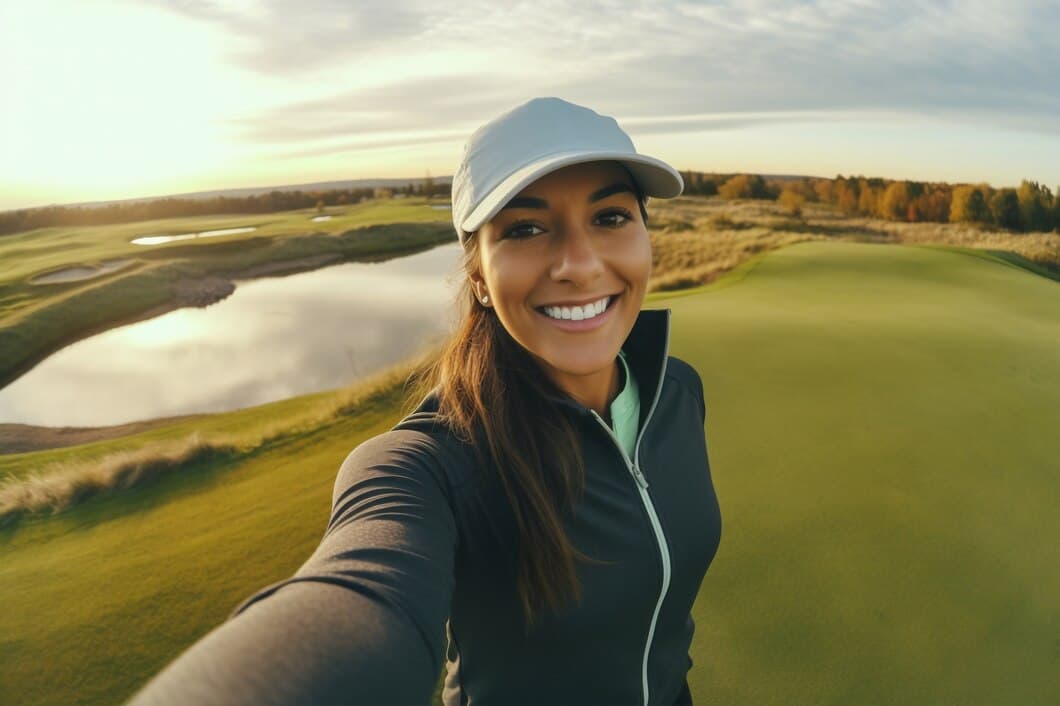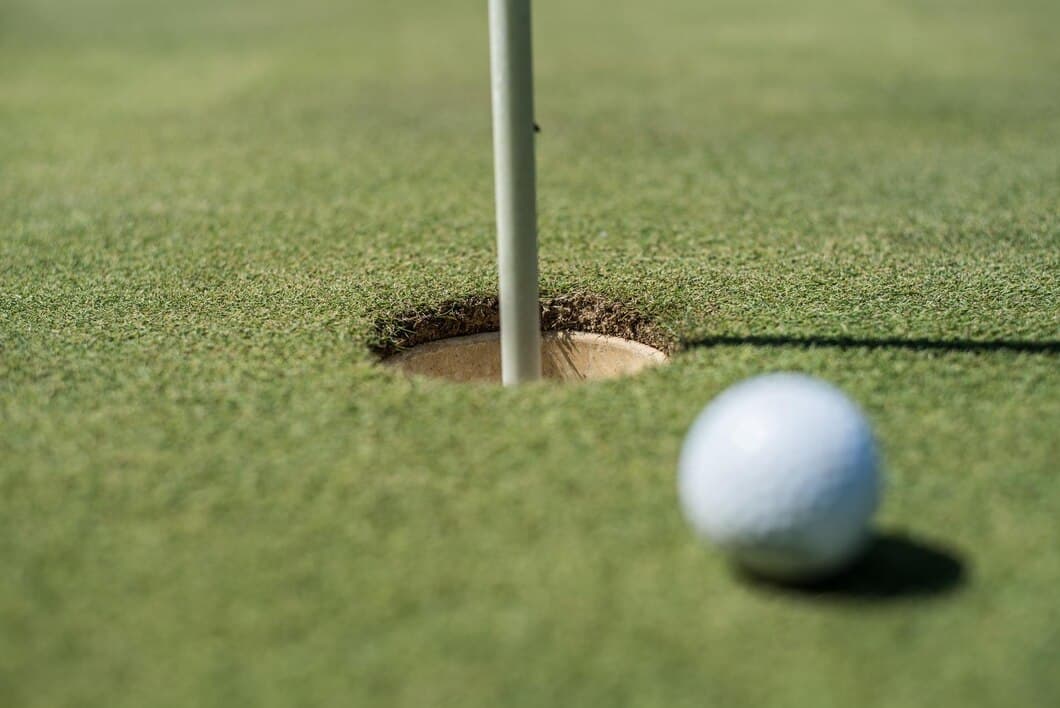1. How Do Pro Golfers Aim?
-

Pro golfers use a variety of aiming techniques to ensure accuracy and consistency in their shots. Some of the most common methods include using a visual cue, such as a tree or flag, or using a rangefinder to determine the distance to the target. Additionally, many golfers use a combination of these techniques to improve their accuracy and consistency.
Regardless of the aiming technique used, it is important for golfers to be consistent in their routine and to practice regularly to improve their accuracy. By developing a consistent pre-shot routine and practicing regularly, golfers can improve their ability to aim and hit the ball consistently.
2. The basics of aiming in golf
Aiming in golf is crucial for accuracy and precision. Mastering the basics of aiming involves understanding the relationship between your clubface, the golf ball, and the target. To aim effectively, you need to align these three elements correctly. The clubface should be square to the intended line of flight, while the ball should be positioned slightly forward in your stance. Additionally, you should ensure that your body is aligned with the target line and that your swing path is on plane.
Proper alignment is essential for accurate aiming. Start by aligning your feet and shoulders perpendicular to the target line. Then, position the clubface square to the intended line of flight. This can be done by checking that the clubface is parallel to an imaginary line drawn between the ball and the target. Finally, make sure that your eyes are over the ball and that your head is not tilted.
Once you have aligned yourself correctly, you can focus on your swing. A good swing path is crucial for hitting the ball accurately. The ideal swing path is one that follows an arc from the inside to the outside of the ball. As you swing, keep your head down and your eyes focused on the ball. Aim for a spot on the ground slightly in front of the ball, and make sure that your swing is smooth and fluid.
By following these basic principles of aiming, you can improve your accuracy and consistency on the golf course. With practice, you can develop a sound aiming routine that will help you hit the ball where you want it to go.
3. How to line up your shot
Aiming is a crucial skill in golf. Top golfers spend countless hours practicing their aim to ensure that they can consistently hit the ball in the desired direction. There are a few key steps that you can follow to help you line up your shot like a pro.
First, stand behind the ball and take a few practice swings. This will help you to get a feel for the club and the ball. Once you have a good feel for the club, address the ball and place your feet shoulder-width apart. Your knees should be slightly bent and your back should be straight.
Next, look down at the ball and pick out a spot where you want to hit it. This is called your "target." Once you have picked out your target, look up and find a point on the horizon that is directly behind your target. This is called your "aim point."
Finally, line up your clubface so that it is parallel to the aim point. Your clubface should also be perpendicular to the target line. Once you have lined up your clubface, take a deep breath and swing smoothly. By following these steps, you can improve your aim and start hitting the ball more consistently.
4. How to use a laser rangefinder
Laser rangefinders can be used to measure the distance from your position to the hole, a hazard, or another point on the golf course. To use a laser rangefinder, first point it at the target and press the range button. The rangefinder will emit a laser pulse and measure the time it takes for the pulse to bounce back. The distance to the target will then be displayed on the rangefinder's screen.
There are a few things to keep in mind when using a laser rangefinder. First, make sure that the rangefinder is calibrated and pointing directly at the target. Second, be aware of any obstacles that may be in the path of the laser pulse, as these can affect the accuracy of the reading. Finally, remember that laser rangefinders can only measure the distance to the target, not the elevation. If you need to know the elevation of the target, you will need to use a different tool.
Laser rangefinders are a valuable tool for golfers of all skill levels. They can help you to make more informed decisions about your shots and improve your overall game.
5. How to read the greens

Reading the greens is a crucial skill for any golfer, and it takes practice to master. The first step is to understand the different types of greens you'll encounter. Some greens are fast and firm, while others are slow and soft. The speed of the green will affect how far your ball rolls, so it's important to take that into account when you're choosing your club.
Once you know the speed of the green, you need to start paying attention to the slope. Greens are rarely flat, so you'll need to be able to read the slope and adjust your aim accordingly. If you're hitting a putt uphill, you'll need to hit it harder than if you're hitting it downhill. You'll also need to take into account the breaks in the green. Breaks are subtle changes in the slope of the green that can cause your ball to curve as it rolls.
Finally, you need to be aware of the grain of the green. The grain is the direction in which the grass grows, and it can affect the speed and direction of your putt. If you're hitting a putt against the grain, it will be slower and more likely to break. If you're hitting a putt with the grain, it will be faster and less likely to break.
Reading the greens takes practice, but it's a skill that can help you lower your scores. By understanding the different factors that affect the roll of your ball, you can make more informed decisions about your shots and improve your chances of making more putts.
6. How to adjust for wind
Wind is one of the most important factors to consider when aiming a golf shot. The wind can affect the ball's trajectory, distance, and spin. To adjust for wind, you need to know which way the wind is blowing and how strong it is. Once you know this, you can make the necessary adjustments to your aim.
If the wind is blowing from left to right, you will need to aim to the left of your target. This will ensure that the ball curves back into the wind and lands on target. The stronger the wind, the more you will need to adjust your aim.
If the wind is blowing from right to left, you will need to aim to the right of your target. This will ensure that the ball curves back into the wind and lands on target. Again, the stronger the wind, the more you will need to adjust your aim.
7. How to putt from different distances
Putting from different distances requires different techniques. For short putts, aim slightly to the right of the hole and use a gentle stroke. For medium-range putts, aim directly at the hole and use a more firm stroke. For long putts, aim slightly to the left of the hole and use a strong stroke.
It is important to practice putting from different distances to get a feel for the correct aim and stroke. You can also use a putting green to help you improve your putting skills.
By following these tips, you can improve your putting accuracy and lower your scores.
8. How to chip from different distances
Golfers who can chip the ball well from any distance have a significant advantage on the course. Chipping from different distances requires different techniques, and it is important to master each one. For shorter chips, a player will typically use a lower lofted club and hit the ball with a more sweeping motion. As the distance increases, a player will need to use a higher lofted club and hit the ball with a more lofted swing. It is also important to take into account the green conditions when chipping. If the green is firm, the ball will run out more, so a player will need to hit the ball with more loft. If the green is soft, the ball will stop more quickly, so a player can hit the ball with less loft.
There are a few things to keep in mind when chipping from different distances. First, the lie of the ball is important. If the ball is sitting down in the rough, it will be more difficult to hit cleanly. Second, the wind is also a factor. If the wind is blowing into the player's face, it will be more difficult to hit the ball with the desired height and trajectory. Finally, the player's own swing is also important. It is important to have a consistent swing and to be able to repeat the same motion every time.
9. How to hit a sand shot
Start by opening the clubface slightly, aiming a few inches behind the ball, and swinging with a smooth, downward motion. Keep your head down and your weight forward, and follow through with your swing.
Once you've mastered the basics, you can start to experiment with different techniques to improve your accuracy and distance. For example, you can try hitting the ball from different lies, such as a downhill lie or an uphill lie.
10. How to hit a fairway wood
10. How to hit a fairway wood. Fairway woods are longer than irons and woods and are typically used for approach shots from the fairway. To hit a fairway wood, you will need to use a tee and take a wider stance than you would when hitting an iron.
Use a tee and take a wider stance. The tee will help to keep the ball in the air for longer, and the wider stance will give you more stability and power. Swing the club back smoothly and then accelerate through the ball. Aim for the center of the ball and make sure to follow through with your swing.
11. How to hit a driver

Frequently Asked Questions
What are the key factors pro golfers consider when aiming?
Pro golfers consider several key factors when aiming, including the distance to the hole, the wind speed and direction, the slope of the green, and the grain of the grass. They also take into account the lie of the ball and the type of shot they are trying to hit.
What tools and techniques do pro golfers use to help them aim?
Pro golfers use a variety of tools and techniques to help them aim, including rangefinders, laser levels, and alignment sticks. They also use their own experience and knowledge of the course to help them determine the best line to the hole.
How can I improve my aiming as a recreational golfer?
There are a few things you can do to improve your aiming as a recreational golfer. First, make sure you have a good understanding of the fundamentals of golf, including how to grip the club and swing it. Second, practice your aiming regularly, using a variety of targets and distances. Finally, don't be afraid to ask a pro golfer or golf instructor for help with your aiming.
What is the most important factor for pro golfers when aiming?
The most important factor for pro golfers when aiming is the distance to the hole. This is because the distance to the hole will determine the club they need to use and the amount of power they need to swing with. Pro golfers also need to take into account the wind speed and direction, the slope of the green, and the grain of the grass. However, the distance to the hole is the most important factor because it is the only factor that cannot be changed.
Conclusion
In brief, understanding how professional golfers aim is not an exact science, and there is no one-size-fits-all approach. However, by understanding the basic principles of aiming and practicing regularly, you can improve your accuracy and consistency on the golf course.
Ultimately, the best way to learn how to aim like a pro is to practice. The more you practice, the more comfortable you will become with the process, and the more accurate your shots will be. So get out there and start practicing today!